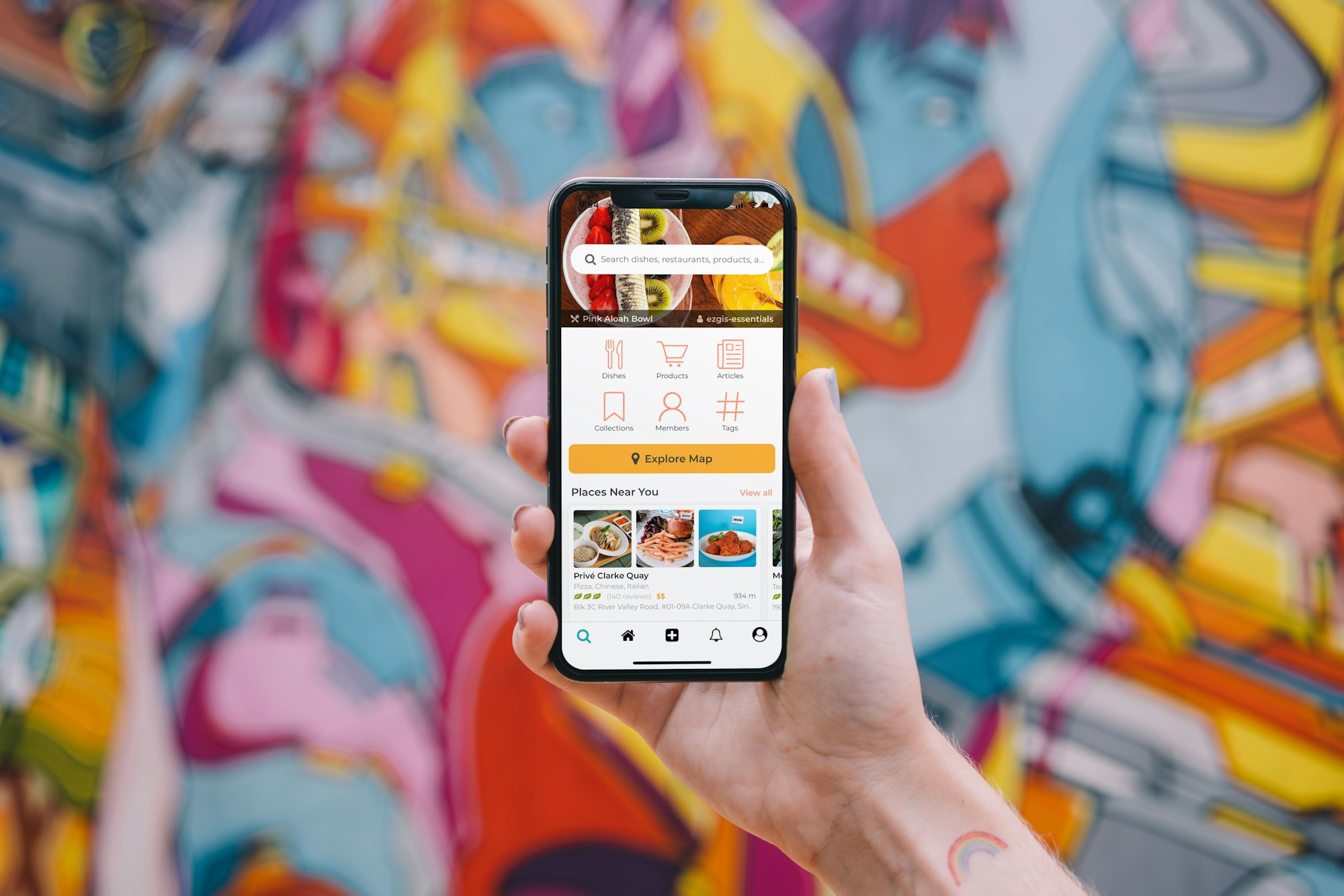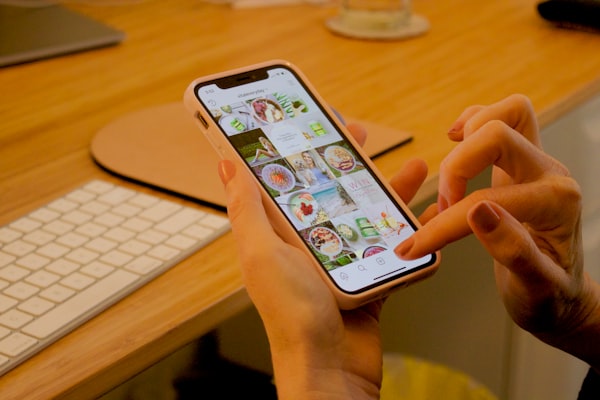1. Understanding the Basics: Why Your Business Needs a Mobile App
Okay, listen up, all you digital explorers and entrepreneurial wizards! Here's the lowdown. Remember the time when phones were just phones? Oh, those were the good old days. But guess what? We live in a world now where you can get pizza delivered to your door through an app. So, if pizzas can have apps, why can't your business?
Now, let's put the fun aside and get serious (well, as serious as we can get). More than half of internet traffic comes from mobile devices. Mobile apps have mushroomed into a colossal digital ecosystem and if your business isn't in this game, it's like being a vegan at a barbecue - you're missing out on all the juicy stuff.
Mobile apps make your business accessible round the clock. Whether your customers are battling insomnia at 3 am or killing time during a ridiculously long commute, they can interact with your business with just a few taps on their smartphone. But that's not all! Apps help in increasing customer engagement, personalizing user experiences, and augmenting brand loyalty. It's like having a marketing ninja in your customers' pockets, striking deals and building relationships.
So, in this digital age, if you're not embracing mobile apps, you're basically saying no to love letters from your customers and growth for your business. Don't be that person. Grab that app! Let's venture into this mobile app wilderness and discover how you can tame it for your business advantage.
2. Defining Your Objectives: What to Achieve with Your Mobile App
Alright, cool cats and kittens, let's put our thinking caps on and dive into the mystical realm of defining objectives for your business app. Are we creating a mobile app just for the sheer thrill of it? No, sir, we're not. Just like heading into the grocery store with a list ensures you don't come home with just ice cream and cookies (although that does sound delightful), setting clear objectives for your mobile app is equally vital.
In this app-ocalypse, you're not just aiming to be another icon on the home screen. You want to be that irreplaceable tool your users can't live without, like coffee on a Monday morning or those stretchy pants during the holidays. But how do we achieve this digital nirvana, you ask?
Start by understanding what your mobile app should accomplish. Is it designed to be an e-commerce platform? A communication channel? An engagement tool? Or perhaps a mystical source of customer insights (like the digital version of a crystal ball)? Define what success looks like for your app.
Moreover, consider your business's grand scheme. Your mobile app should be a cog in this mega-machine, working harmoniously with other aspects like your website, social media platforms, and offline stores. It's the digital version of a symphony orchestra, each part playing its own role, but together creating a magical symphony.
It’s also essential to set Key Performance Indicators (KPIs) to measure the effectiveness of your app. Yes, friends, we're getting into some hardcore stuff here - retention rate, session length, daily active users, conversion rate, and so on. These metrics are like the breadcrumbs Hansel and Gretel should have used - they lead you right to your goal without getting lost in the dense forest of mobile marketing.
3. Know Your Audience: Targeting the Right Users for Your Business App
So, now that we've got our objectives locked down tighter than the secret recipe for KFC, it's time to unravel the next enigma - your audience. Let's be honest, creating an app without knowing your audience is like throwing a Star Wars-themed party and inviting Star Trek fans - it's just not going to work.
Knowing your audience is like having the Marauder's Map of your business (minus the "I solemnly swear I am up to no good" part). It's not enough to just think, "Ah, yes, my audience is everyone with a smartphone." Nope! That's like shooting for the stars with a water gun. Here's the secret sauce - you need to segment your audience.
Ask yourself, who would benefit from my app? Who would actually use it? Define demographics, like age, gender, location, and occupation. Go a step further and understand your audience's behaviors, interests, and even their pain points. Yes, we're turning into digital Sherlock Holmes here!
Use tools like Google Analytics or social media insights to gather data on your audience. This knowledge is like a magic mirror - it reflects what your audience wants, how they interact, and what they resonate with. With this in hand, you can design an app that isn't just another download, but a digital companion to your audience.
Remember, the right audience won't just use your app; they will cherish it, recommend it, and most importantly, stay loyal to it. So, take your time, do the research, and create an app that speaks directly to your audience. After all, what good is a love letter if it's not addressed to the right person?
4. Strategic Planning: Key Features Your Business App Should Have
Alright, folks, it's time to channel our inner architects and start blueprinting the key features of our business app. This isn't a game of pin-the-tail-on-the-donkey; it's more like creating a Michelin Star meal. Every ingredient (or feature) matters, and the devil is in the details.
First off, let's talk about navigation. Making your app easy to navigate is like a neatly organized sock drawer: it just makes life so much easier. If your users have to embark on a "Lord of the Rings"-style quest to find what they need, they're probably going to uninstall faster than you can say "Gandalf the Grey".
Next up is customization. Let your users feel like they are in control. Allow them to tailor the app according to their preferences, just like they'd customize a pizza. More cheese, less olives? You got it!
Remember, a well-designed app can feel as comfy as your favorite pair of old jeans. This means it should be responsive and optimized for different screen sizes and orientations. We're not all big-screen aficionados, and your app should be a sight for sore eyes on all devices.
On to the next must-have: Updates and notifications. This feature is like your mom reminding you to wear a coat when it's cold. It keeps your users informed about new features, deals, and any changes to your service.
And of course, we can't forget about security. This is a non-negotiable. Users need to trust that their data is safer than a cookie jar on the top shelf. Implement features like two-step verification or biometric authentication to ensure that your app is Fort Knox for user data.
Lastly, integration with other apps and social media platforms can be a game-changer. It’s like that friend who knows everyone at the party. Making it easy for your users to share content, invite friends, or connect with your business on different platforms can exponentially increase your reach.
Remember, your app should be a well-oiled machine, seamlessly integrating these features to create an enjoyable and efficient user experience. So, grab your digital toolset and start crafting! And while you're at it, don't forget to join us for our next deep dive into the fascinating world of UX/UI design.
5. Investing in UX/UI Design: The Heart of a Successful Mobile App
Welcome, all you app-aspiring Picassos and Da Vincis! Now that we've gotten a hang of the key features, it's time to talk about the star of the show, the pièce de résistance - UX/UI design. This is where science meets art, logic intertwines with creativity, and we've got the best seat in the house!
UX, or User Experience, is like the plot of a thrilling novel. It's all about how your audience interacts with your app, their journey from the first click to the last, their highs and lows, their triumphs and frustrations. On the other hand, UI, or User Interface, is the book cover, typography, and illustrations - the visual elements that make the story come alive.
Why are UX/UI so crucial? Imagine going on a date with someone who's absolutely stunning but can't hold a conversation to save their life. It's the same with apps. A beautiful design may attract users, but if the navigation is harder than solving a Rubik's cube, they're going to hit the uninstall button faster than you can say "bad date".
Investing in UX/UI design ensures that your app isn't just aesthetically pleasing but also user-friendly and intuitive. A great UX/UI design is like a friendly tour guide, helping users navigate through the app effortlessly and intuitively.
Remember to maintain consistency in your design. That's like having the same salsa steps throughout the dance - it maintains rhythm and flow. Your buttons, icons, fonts, and color schemes should have the same style and feel across the app.
Don't forget about feedback loops, either. When users interact with your app, they should get a response or acknowledgment. It's like playing fetch with a dog; throw the ball (input), and the dog brings it back (response).
Lastly, testing is a big part of UX/UI design. Once you've designed your app, put it to the test with real users. It's like the final rehearsal before the big performance - it helps you spot any flaws and rectify them before the grand launch.
In the end, good UX/UI design is like the golden thread that stitches all the elements of your app together into a beautiful tapestry. So, pull up your designer socks and get ready to create something magical! Don't forget to stick around for our next rendezvous, where we'll discuss the serious business of app security.
6. Securing Your App: The Importance of Mobile App Security for Business
Okay, dear tech-savvies and app-trepreneurs, we've had our share of fun designing and strategizing. Now, it's time to talk about something serious, something that's as crucial as Batman to Gotham City - Mobile App Security.
When it comes to app security, we're not messing around. Just like you wouldn't leave your house unlocked with a sign saying "Free Stuff Inside," you shouldn't treat your app's security lightly. In this digital age, cyber threats are as real as that horror of realizing you've run out of coffee on a Monday morning.
Your app might be collecting all kinds of user data, from their personal info to their credit card numbers. In the wrong hands, this information could wreak more havoc than a bull in a china shop. That's why your app needs to be a digital Alcatraz, impregnable to any data thieves or mischief-makers.
How do you do this, you ask? Well, for starters, implement strong encryption for data storage and transmission. It's like having an army of digital bodyguards protecting your users' data. You should also consider methods like two-factor authentication, which adds an extra layer of security during login.
Keep your software updated. Cyber threats evolve faster than fashion trends, so ensure you're always up-to-date with the latest security patches and updates. Remember, an outdated app is an easy target, just like taking candy from a baby.
Don't forget to educate your users about security, too. Encourage them to create strong passwords and remind them to update their app regularly. After all, safety is a two-way street.
In conclusion, the security of your mobile app is not just an option; it's a necessity. So, let's be like digital superheroes, protect our users, and maintain trust in our brands. Now that we've got this serious topic out of the way, join me next time as we uncover the secrets of app monetization. It's going to be a ride!
7. Mastering Monetization: Strategies for Making Your App Profitable
Calling all aspiring app tycoons and digital gold diggers! Now that we've conquered the realm of design, features, and security, let's dive into the juicy bit - the moolah, the dough, the cha-ching! Yes, we're talking about monetization, because at the end of the day, we're all looking for that pot of gold at the end of the app rainbow, right?
Monetizing your app is like having a digital lemonade stand. But instead of just selling lemonade, you've got several ways to make those dollars roll in. Let's start with the basics - paid apps. It's like a one-time ticket to an amusement park. Users pay upfront to download and enjoy all the rides (features) inside.
Then there's the freemium model, the ‘try before you buy’ of the app world. Users can download the app for free, but premium features are locked behind a paywall. It's like getting free entry into the amusement park, but the rollercoasters and cotton candy stands cost extra.
Next up are in-app purchases, the impulse buy rack of the digital world. These could be anything from extra lives in a game to premium filters in a photo editing app. It's like when you go to a store for a loaf of bread and somehow come back with a whole cart of goodies.
And let's not forget about ads. Yes, they can be annoying, like that one mosquito that won't leave you alone at night. But when done right, they can be a significant revenue source. Use them sparingly and strategically, like the sprinkles on a donut, not the whole frosting.
Lastly, consider sponsorships and partnerships. It's like wearing a brand's jersey and getting paid for it. Find a partner whose products align with your app and can bring value to your users.
Remember, the best monetization strategy depends on your app's nature, your audience, and your business objectives. It's all about finding that sweet spot between profitability and user experience. But don't worry, you've got this! And when in doubt, don't forget to revisit our wise words here.
Now, grab your digital pickaxes, and let's mine some digital gold! But before you dash off, make sure you stick around for our next section, where we'll be exploring the world of app marketing. See you there!
8. App Store Optimization: How to Boost Your App's Visibility
Prepare your periscopes, aspiring app magnates! Now that we've nailed down monetization, it's time to dive into the choppy seas of App Store Optimization (ASO). It's like being a rockstar, but instead of fans, we want downloads, and instead of concert tickets, we're selling app features.
ASO is like SEO's younger sibling, but instead of optimizing for Google, we're tailoring our apps to rank higher in app store search results. Why, you ask? Well, imagine playing an incredible guitar solo in an empty stadium. That's what launching an app without ASO feels like. No matter how amazing your app is, without visibility, it's like a ghost in the digital crowd.
Start by choosing the right app name. It should be unique, catchy, and give an inkling of what your app is about. It's like naming a baby, but instead of cute, you want it to be keyword-rich. Yes, those magic words that your potential users are typing into the search bar - those need to be in your app's name and description.
Your app description is like your elevator pitch. It needs to be clear, concise, and compelling. Include the benefits, features, and why it's better than the bagels at your local cafe. And, of course, don't forget those sweet, sweet keywords.
Next up, screenshots and videos. Think of them as your app's red carpet photos. They need to show off the best aspects of your app in an attractive and engaging way. Show real usage scenarios, highlight key features, and remember, first impressions matter.
Reviews and ratings are your app's report card. The better they are, the higher your app will rank. So, encourage your users to leave reviews, but remember, no bribing! Honest reviews are like your app's best friends; they make your app look good in public.
Lastly, keep an eye on your competitors. Learn from their successes and mistakes. It's like being a digital James Bond, but instead of spying, we're doing 'competitive research.'
In the end, remember that ASO isn't a one-time thing. It's an ongoing process of testing, analyzing, and improving. So, get ready to dive into this exciting journey of making your app the star it deserves to be! And don't forget to join us in the next section, where we talk about the grand finale - launching your app. See you there!
9. Post-Launch: Maintaining and Updating Your Business App
Ahoy, digital voyagers! We've navigated the tumultuous seas of app creation, from concept to launch. But wait! Our journey is not over yet. Now, it's time for the post-launch phase, the maintenance and updating of your business app. It's like having a pet dragon - sounds exciting, but you need to keep feeding it and cleaning up after it to keep the magic alive.
Maintaining your app is like owning a car; you can't just drive it off the lot and never service it. Bugs will pop up like weeds in a garden, and new features will need to be added as user demands change. Yes, my friends, the launch was only the beginning.
Updating your app regularly shows your users that you're committed to improving their experience. It's like hosting a party and constantly refilling the snack bowls; it keeps the guests happy and the party going. So, always keep an eye out for those pesky bugs and squash them before they affect user experience.
Listen to user feedback like it's your favorite radio station. Those reviews and comments are a goldmine of information on what's working and what's not. It's like getting a free consultation on how to make your app better.
New features are like adding new rides to an amusement park; they keep the excitement alive and the users coming back for more. Whether it's integrating with a new social media platform or adding a dark mode, updates keep your app fresh and relevant.
Security, as we've discussed earlier, is non-negotiable. With new threats emerging every day, your app's security needs to be tighter than a drum. Regularly update your security measures to ensure that your user data is safer than secrets in a diary.
Lastly, remember to communicate with your users. Announce updates, ask for feedback, and be responsive. It's like being a good friend; you listen, you learn, you communicate. And that's how you maintain a healthy relationship with your users.
So, ready to step into this post-launch journey? Buckle up, because it's a wild ride of updates, improvements, and constant learning. And trust us, it's worth every bit of effort. Now, let's move to our final thoughts and wrap up this app-tastic adventure. See you there!
10. Case Studies: Successful Business Apps and What We Can Learn From Them
Good day, tech aficionados and app fanatics! We've ventured through the riveting journey of app creation, from crafting features to slaying bugs. Now, as our journey nears its end, it's time for some tales from the trenches, a few awe-inspiring case studies of successful business apps. It's like watching the highlight reel after a thrilling match, but instead of goals and saves, we're cheering for downloads and user ratings.
Let's start with the granddaddy of them all, Airbnb. Their app is a masterclass in UX/UI design and functionality. They took a complex process - booking accommodations in foreign places - and made it as easy as pie. Easy navigation, high-quality images, and personalized recommendations? Check, check, and check! What's the lesson? User experience matters more than a walrus loves fish.
Next up, Uber. Their app transformed the transportation industry by making rides accessible at the tap of a button. What can we learn? That solving a real problem wins you not just users but loyal fans. Plus, their use of real-time tracking technology shows how to leverage tech for enhanced user experience.
Evernote, the elephant-themed note-taking app, is another shining star. With its easy-to-use features and cross-platform accessibility, it's a prime example of the importance of utility in an app. It shows that an app doesn't have to do everything; it just needs to do one thing really well.
Slack, the go-to app for team communication, has also carved out a niche for itself. It shows the power of addressing a specific user need - in this case, improving team collaboration and productivity. Plus, it's a testament to the importance of regular updates and feature additions based on user feedback.
Finally, we have Headspace, a mindfulness app that makes meditation accessible. With its friendly design and use of gamification, it shows how to make an app engaging and enjoyable. The takeaway? Making an app fun can lead to increased user engagement and retention.
In conclusion, every successful app has a lesson to teach, from understanding user needs to the importance of design and updates. So, as we wrap up this app-venture, remember to keep learning, improving, and innovating. The road to a successful app is like a rollercoaster, with highs, lows, and a whole lot of excitement. So strap in, hold tight, and enjoy the ride!








